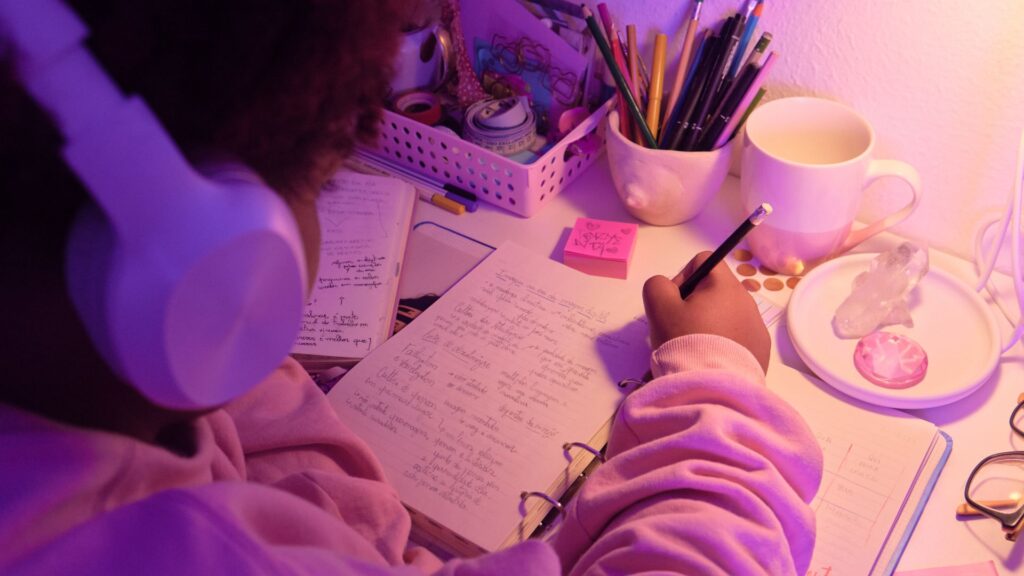Some still say subvocalization is a myth, and no such thing happens. Some scientists and researchers proved that this is happening in people’s minds. Subvocalization has its theories. Here in this article, I will discuss how to stop subvocalizing, and what are the ways to stop subvocalizing?
I subvocalize what I read. My friend doesn’t. We need to determine precisely how many people subvocalize and who don’t. Some claim that subvocalizing is a bad reading habit. I’m afraid I have to disagree with that statement. Yes, it is a type of reading that doesn’t equal speed reading. But it doesn’t necessarily mean that it is a bad reading habit.
Many speed-reading techniques claim that subvocalization can be eliminated. We still need to find out if it is possible. But there can be a minimal amount of subvocalization when you read. Subvocalization is how your brain tries to focus more on what you read. Reducing or going with it isn’t a must but only your choice.
In this article, we have put together various methods for you that will help you reduce or eliminate subvocalizing.
10 Ways to Stop Subvocalizing
1. Use your Finger or Pointer

Guiding your eyes through what you read can help in reducing subvocalization. Keep your finger on the sentences that you read. Take your inner voice to show up. Move your fingers at a pace your eyes can follow and comprehend what you are reading.
But make sure that you don’t just move your fingers where your eyes can only focus on your fingertip rather than the content. A pointer can also be an aid in this. Don’t move your finger or pointer too fast. Maintain a constant pace, and that depends upon your average reading speed.
It should be noted that you don’t move your finger at the same reading speed. And when using a finger or a pointer, don’t try to focus on a single word. Make sure to leave a time gap between the words.
2. Read More Than you Actually Read

If you usually read two to three words together at a time, try increasing the number of words you read. It need not be a sudden step from two words to a sentence.
You can increase it gradually. Start with four to five words. Then move on to long sentences. Reading blocks of words together will limit the time your mind gets to subvocalize it.
This method will gradually increase your reading speed. It may be difficult at first as you might not be able to take in a lot of words at the same time. But you’ll comprehend them once you practice them.
3. Train your Eyes

Eyes move faster than the mouth or your inner voice. Even when you keep your fingertip pointing to the sentences you read, your eyes may not be able to move along with the finger or pointer. Sometimes, your eyes may move but do not capture or focus on details.
This is okay if it happens at the stage where you are trying to eliminate subvocalization. But it would help if you did not misinterpret this as a way of reading. Ultimately, it would help if you remembered what you read, no matter how slow or fast.
You read through your eyes. Hence it is essential to train your eyes at the speed at which you aim to read gradually.
4. Keep your Other Sound Organs Busy

We read through our eyes. Yes. But we also read with our mouth, larynx, throat, tongue, and more. We may train our eyes. We may keep our fingers pointing at what we read.
Despite all this, it will be extraordinarily tempting to use your mouth, tongue, and other sound organs to read aloud or at least imitate what your inner voice is reading for you. So, keep those busy. Some say that eating alongside reading is good for neither of the acts.
But keeping those busy can help increase the speed at which you read. Keeping them busy will, one way or another, make your brain forget subvocalizing, at least for moments. And when you practice this, the voice inside your head may fade away.
5. Use Apps

This is instead a method to speed read than to stop subvocalizing. As stopping or reducing subvocalization and speed reading are interconnected, we may try this too.
There are a lot of apps in the market that helps with speed reading. You can find a lot of these in the app stores. You can set a reading speed and choose the content you want. The app will display the words as per the speed you have set.
There are options available in some apps to display blocks of words too. You are compelled to read those words within the assigned milliseconds or seconds. This is an effective method that many professionals follow to train people to speed read.
6. Keep Reading

Your eyes will move at speed. Your inner voice will sound at speed. There lies an untold race between these two. Your efficiency in reading well depends on how well you manage these two. If the voice inside your head is pronouncing a word and your eyes have already fallen on the next word, go on. Read (see) the next word. And the next.
And continue the same way. Your brain may not comprehend what you read. But this will get better with practice. It’ll be easy to speed read and stop subvocalization when you try making your eyes win this race.
7. Listen to Music.

What else is a great distraction? We are used to this method. It has become a habit for most of us to listen to songs when we are doing any work. We can do the same here. The only thing we should take care of is the type of song we will listen to while reading.
Reading something doesn’t equal other tasks, right? So be picky about the songs. We are listening to songs to concentrate more on the reading and not on the subvocalizing part. So it shouldn’t result in focusing more on listening to the song part rather than the reading part.
Listen to some slow melodies that wouldn’t be so boring that will make you sleep. But listen to something other than fast-beat songs that tempt you to get on the floor and dance. Select them wisely.
8. Distract yourself

There are a lot of ways to distract yourself. It shouldn’t be any unplanned distractions that will divert you from reading itself. Distraction should be something that will distract your mind from wanting to subvocalize everything that you read.
It can be something that will keep your hand or mouth engaged, like chewing gum or weaving something. It should be in such a way that you need not concentrate on the task that much. It should be happening parallelly alongside reading.
9. Skim before you Read

Many suggest and follow this to reduce subvocalizing. Skim the entire content before you read. This will give you more idea about the content and help you remember better when you read so that your brain doesn’t need to put in an extra effort trying to focus on what you read.
10. Use a Reading Slit

Have a carton that can be used while reading. You can use it to look at only a part of the entire page while reading. This will mislead your brain that there is only a tiny part to read, so it wouldn’t try to subvocalize.
This is no proven method, but many speed-reading practices follow this.
Conclusions | How to Stop Subvocalizing?
These are only a few known methods. You can choose your way to eliminate subvocalizing. But remember that it isn’t a must to do so. Subvocalization is pretty good. It has its pros. Try reducing or stopping it only if you need to do so.
Else, go with it. Yes, it affects your reading speed comparatively. But if it isn’t an issue for you, then there is no necessity to change your reading style. Happy reading!
Also check the link mentioned below:




